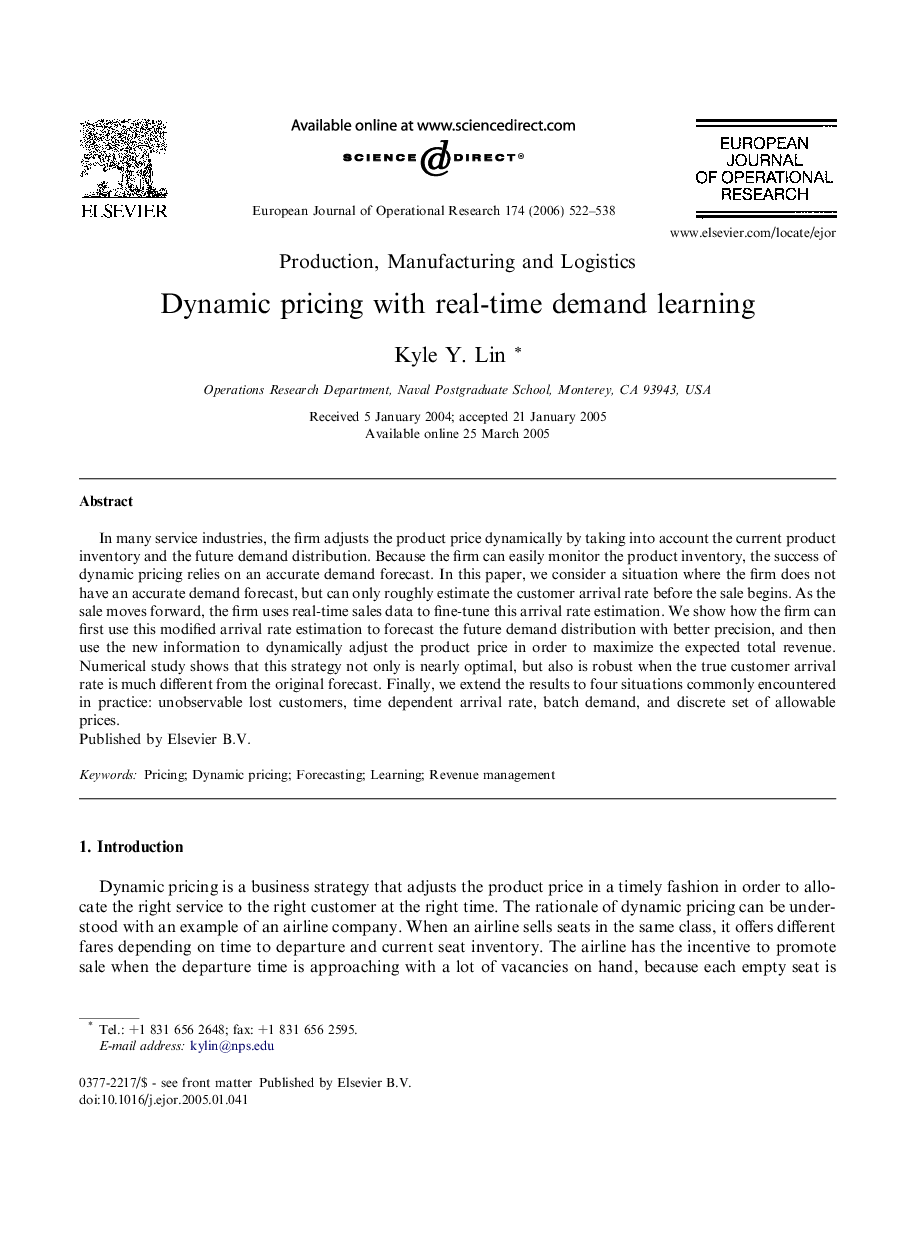| Article ID | Journal | Published Year | Pages | File Type |
|---|---|---|---|---|
| 477895 | European Journal of Operational Research | 2006 | 17 Pages |
In many service industries, the firm adjusts the product price dynamically by taking into account the current product inventory and the future demand distribution. Because the firm can easily monitor the product inventory, the success of dynamic pricing relies on an accurate demand forecast. In this paper, we consider a situation where the firm does not have an accurate demand forecast, but can only roughly estimate the customer arrival rate before the sale begins. As the sale moves forward, the firm uses real-time sales data to fine-tune this arrival rate estimation. We show how the firm can first use this modified arrival rate estimation to forecast the future demand distribution with better precision, and then use the new information to dynamically adjust the product price in order to maximize the expected total revenue. Numerical study shows that this strategy not only is nearly optimal, but also is robust when the true customer arrival rate is much different from the original forecast. Finally, we extend the results to four situations commonly encountered in practice: unobservable lost customers, time dependent arrival rate, batch demand, and discrete set of allowable prices.
